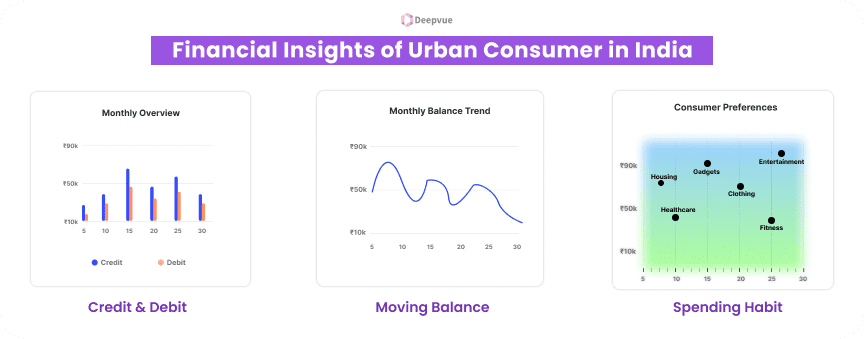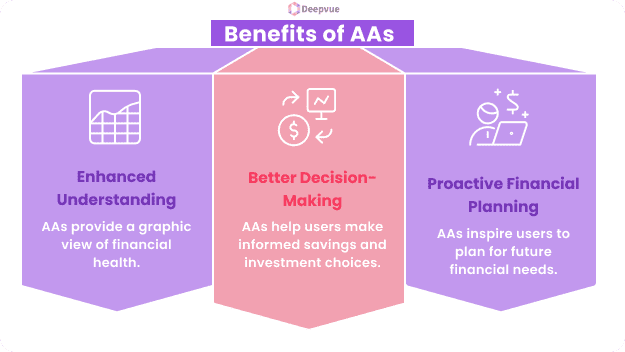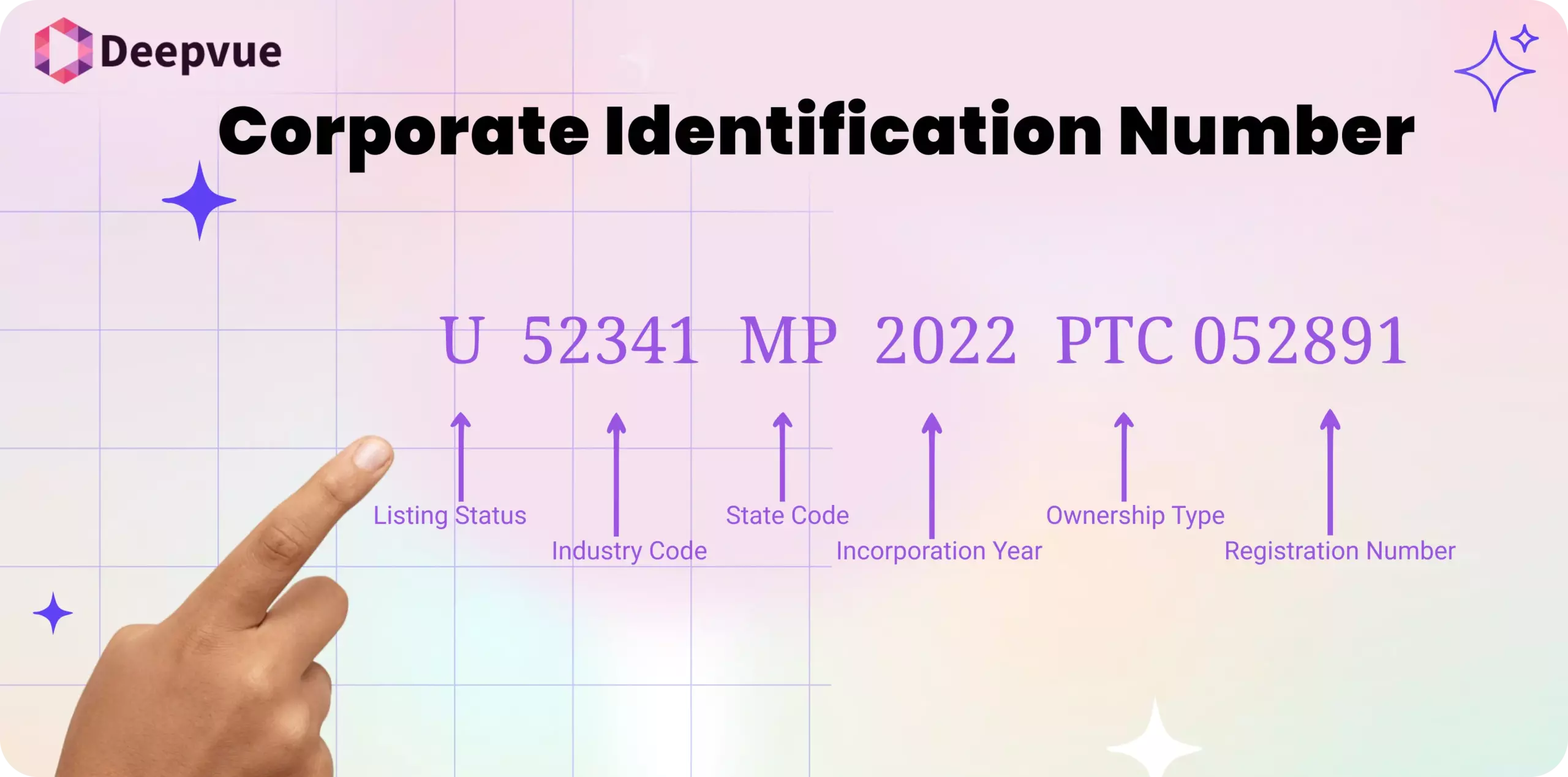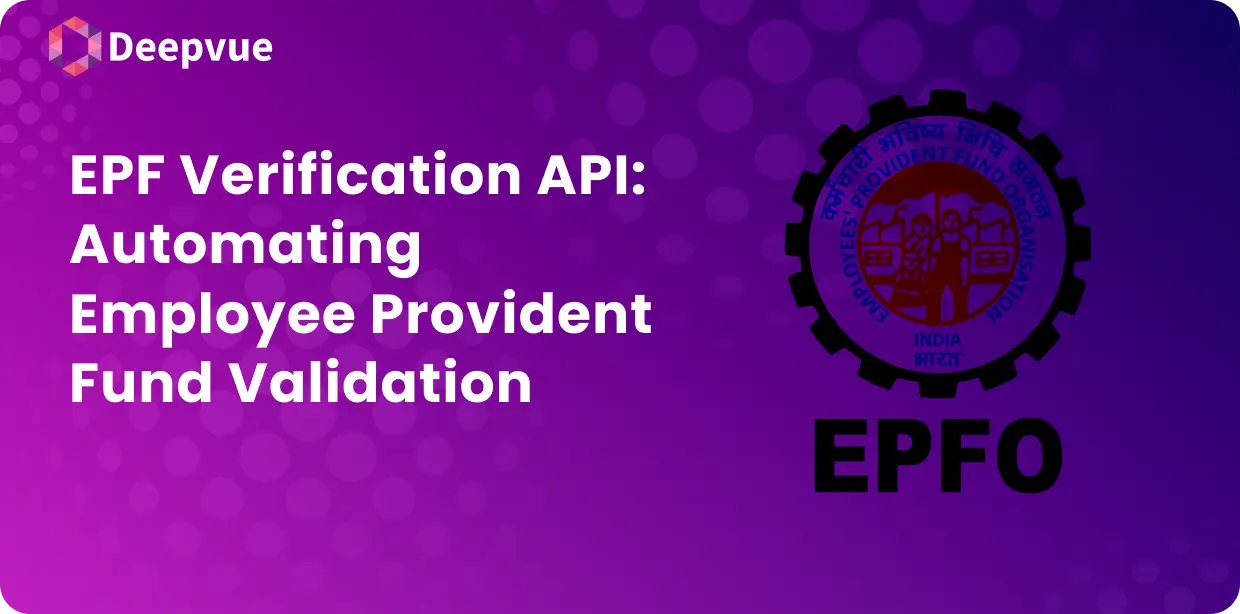Financial inclusion ensures that any person or enterprise has access to fundamental financial services like savings, credit, insurance, and payment. However, despite such inclusions, a significant number of people continue to be excluded because they have very limited access to financial information and services in developing economies. Rapid technological progress soon bridged these gaps. The introduction of Account Aggregators (AAs) was the most surprising and game-changing.
Account aggregators are consent-based data-sharing platforms, that access multi-source financial information in a secure and real-time environment. AAs empower people and businesses to share their data seamlessly with financial institutions, thereby improving service accessibility, addressing credit gaps, and enhancing financial decision-making. In combination with data visualization, these platforms make complex financial information easy to understand for users to work with their financial data.
What Are Account Aggregators, and How Do They Work?
Account Aggregators are licensed entities under the Reserve Bank of India that enable the secure exchange of users’ financial data typically stored with FIP with financial institutions and businesses as known as FIUs. The data is shared after receiving consent from the user. When a user consents to share financial informations, the AA securely fetches data from FIPs and shares it with FIUs. The AAs cannot store or view data themselves, reinforcing data security.
The process runs on a consent-based framework, where the users have absolute control over who can access their data and for how long. This system gives transparency and empowers the user to make proper decisions without manually gathering data from various sources.
Key Features of Account Aggregators
- Consent-Based Data Sharing: The user consents to data sharing via a single, secure consent mechanism.
- Interoperability: AAs interact with various financial institutions(FIPs & FIUs), providing an easy data-sharing environment.
- Security: With end-to-end encryption and robust data protection protocols, AAs ensure that sensitive financial information remains secure.
Key Participants in the Account Aggregator Network
- User: The user is the core of the account aggregator network. The primary role of the user is to give consent to share their financial information. The user has full control over its sharing by granting or revoking consent.
- Financial Institutions: Financial institutions, such as banks, insurance companies, and mutual funds, make use of aggregated data to offer products and services in a customized way. This further opens access to a range of financial options for marginalized people.
- Financial Information User (FIU): FIUs are financial entities that require access to users’ financial data to provide services. The role of FIU is to request and use users’ financial data for delivering financial products and services. They analyze the financial data to offer personalized financial services, ensure data confidentiality, and usage as per user consent
- Financial Information Provider (FIP): FIPs are financial entities that hold users’ financial data. FIP provides FIUs with financial information in response to valid consent requests. Its role is to safely and securely share financial data with authorized FIUs through the AA network.
- Regulators: RBI and SEBI are regulatory bodies that ensure safe, consent-based sharing of financial data within the AA network. They establish legal frameworks and ensure their enforcement to protect user privacy and maintain system integrity.
Why Visual Formats Are More Effective Than Raw Data?
Data visualization is very intuitive and captivating compared to any tabular or textual format. For example, a graphical representation of one’s monthly expenditures immediately reveals consumption patterns that one would otherwise miss within a list of transaction amounts. The availability of such a view makes data visualization an important tool for educating users about their spending habits.
Examples of Data Visualization Tools
- Graphs and Charts: Monthly expenditure bar graphs and pie charts representing budget allocations.
- Dashboards: Interactive displays offering real-time views of one’s financial position.
- Heatmaps: Reflect the amount spent by a user on a particular type of expense for different categories.

How Account Aggregators Use Data Visualization?
Data visualization tools powered by AA data help users gain a clear understanding of their spending habits, income distribution, and savings trends. Dashboards can visually display patterns, empowering users to manage budgets more effectively and adjust spending to meet savings goals.
- Comparative Analysis of Financial Products
AAs provide comprehensive data that businesses can use to create visual tools for comparing loans, investments, and other financial products. Side-by-side bar charts and interactive graphs can illustrate differences in interest rates, tenure, and returns, empowering users to make informed financial decisions..
- Highlighting Risks and Opportunities in User Finances
Through real-time insights, businesses can use AA data to create dashboards that highlight financial risks, such as rising credit utilization or insufficient emergency funds, while also showcasing investment opportunities or tax-saving strategies. This visualization enables proactive financial planning.
Benefits for Users

- Enhanced Understanding of Financial Health
Visualization tools built using AA data provide users with deep analysis of their financial position, income pattern, and spending trends. It helps the users to quickly identify improvement areas so that appropriate steps are taken for healthy financial management.
- Better Decision-Making
Graphical representations of financial data allow users to compare savings, investment, and budgeting options clearly. For instance, side-by-side comparisons of investment choices can easily illustrate the balance between risk and potential returns, enabling smarter financial decisions.
- Encouraging Proactive Financial Planning
With intuitive visualization dashboards powered by AA data, users are inspired to take charge of their financial futures. By analyzing their financial history and patterns, they can plan for major goals, such as building an emergency fund, creating a retirement plan, or saving for significant purchases.
The Impact of Account Aggregation on Financial Inclusion
The impact of account aggregation on financial inclusion is profound and transformative. By consolidating financial data from various sources into a single platform, account aggregation significantly lowers the barriers to financial services for underserved populations.
- Enhanced Credit Access: Account aggregation allows for a more comprehensive view of an individual’s or business’s financial situation, helping financial institutions make more informed lending decisions. This can augment access to credit for people who earlier would have been barred because of a lack of traditional financial records.
- Improved Risk Assessment: Account aggregation will improve risk assessment because it will allow lenders to gain a better financial profile of a potential borrower, which will enable lenders to make more accurate and specific financial services.
- Democratization of Financial Services: The technology enables broader segments of the population, especially those in underserved or rural areas, to access financial services that were previously inaccessible, thereby democratizing financial services.
- Financial Empowerment: Individuals and small businesses gain better control over their financial health through easy access to their consolidated financial information, empowering them to make more informed financial decisions.
- Innovation in Financial Products: Through detailed financial data, innovation in financial products and services occurs, and financial product and service offerings can be more customized and appropriate to consumer needs.
The Relationship Between Account Aggregators and Open Banking
Account Aggregators and Open Banking are complementary and hold a lot of potential to change the face of the financial world. AAs offer a systematic process for accessing a big cross-section of financial data outside traditional banking, encompassing investments and insurance sectors that may not necessarily be included in the purview of Open Banking initiatives. Establishing an interoperable framework that continues to build onto Open Banking platforms, makes available broader data sets and improves clarity.
The two frameworks support strict data protection and sound consent management. Thus, they position the customer as the master of their financial data. These two systems bring financial inclusion, thereby allowing the availability of relevant financial products and services for the unbanked and under-banked populations. These frameworks in conjunction will contribute most to future innovations, great customer experience, and a highly transparent, safe, and consumer-oriented financial terrain.
Potential Impact on the Financial Ecosystem in India
Account aggregators can play a very important role in India’s financial ecosystem by increasing financial inclusion. It enables underserved populations to access critical financial services by providing them with a unified view of their financial data from multiple sources. A large part of the population in this country lacks access to traditional banking or financial products, and account aggregators bridge this gap by offering tools that empower users to make informed decisions.
Besides the simplification of financial management, data aggregation will improve the availability of credit, insurance, and other services specially designed for low-income or rural communities. Moreover, the use of account aggregation with data visualization will help make complex financial data easier to understand, thus more accessible to an individual’s own understanding of their financial position. This increases further participation in the formal financial sector because clients develop more trust in their financial management. This wealth of data can be used by financial institutions to come up with personalized financial products tailored to the requirements of the Indian market.
Closing Remarks
In this blog, we have discussed how an Account Aggregator coupled with data visualization could enhance the cause of financial inclusion to great levels. It makes financial information easier to understand, which empowers the individual and the business to make informed decisions and, thereby, access better credit opportunities and a clearer understanding of their financial position.
The role of Account Aggregators is to fill the gap between financial institutions and underserved populations. They are promoting data sharing at a consent-based level while facilitating the efficient management of financial transactions through comfortable visual insights. Account Aggregators are paving the road to a future in which everyone, whoever their background, can fully participate and benefit from the financial system.
FAQ:
What is financial inclusion, and why is it important?
Financial inclusion ensures that individuals and businesses have access to affordable financial services, fostering economic growth and reducing financial inequalities.
Can Account Aggregators improve credit access for underserved populations?
Yes, by providing comprehensive and real-time financial data, AAs help financial institutions assess creditworthiness more accurately, improving access to loans.
How do Account Aggregators promote financial inclusion?
AAs make it easier to access financial information, thus making the loaning process easier, as well as the management of finances and financial decision-making for both individuals and businesses.
What is data visualization in the context of financial services?
Data visualization is the representation of complex financial information in graphical, chart, or dashboard format as a means of enabling understanding and further analysis in any domain of information.
What are the benefits of consent-based data sharing in financial services?
Consent-based data sharing promotes trust between financial institutions and individuals by assuring the privacy, transparency, and control of financial information.








